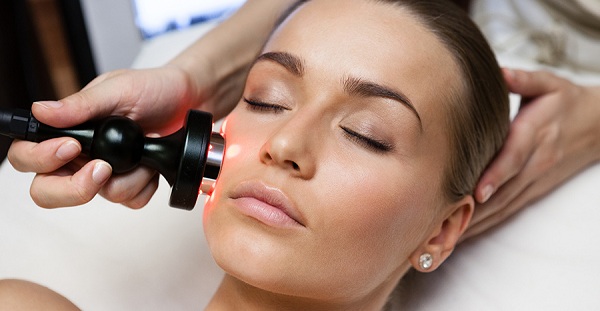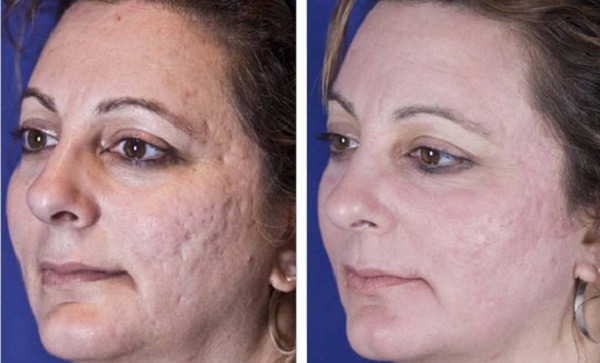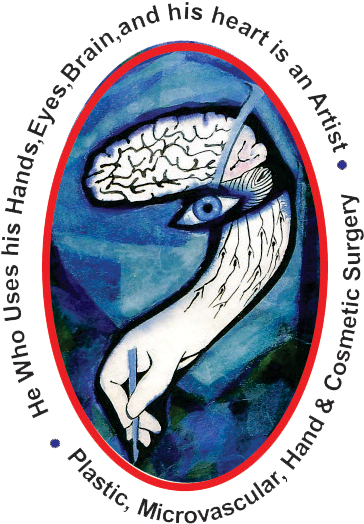Laser Resurfacing
Laser resurfacing is a treatment to reduce facial wrinkles and skin irregularities, such as blemishes or acne scars.
The technique directs short, concentrated pulsating beams of light at irregular skin, precisely removing skin layer by layer. This popular procedure is also called lasabrasion, laser peel, or laser vaporization.
If aging, acne, or too much time in the sun has left your face with blotches, scars, wrinkles, or lines, laser skin resurfacing may help your skin look younger and healthier.
Laser skin resurfacing removes skin layer by layer with precision. The new skin cells that form during healing give the skin a tighter, younger looking surface. The procedure can be done alone or with other cosmetic surgeries on the face.
Questions? We got Answers!
If you have fine lines or wrinkles around your eyes or mouth or on your forehead, shallow scars from acne, or non-responsive skin after a facelift, then you may be a good candidate for laser skin resurfacing.
If you have acne or if you have very dark skin, you may not be a candidate. This technique is also not recommended for stretch marks. You should discuss whether laser resurfacing is right for you by consulting with the doctor before having the procedure done.
The two types of lasers most commonly used in laser resurfacing are carbon dioxide (CO2) and erbium. Each laser vaporizes skin cells damaged at the surface-level.
CO2 Laser Resurfacing
This method has been used for years to treat different skin issues, including wrinkles, scars, warts, enlarged oil glands on the nose, and other conditions.
The newest version of CO2 laser resurfacing (fractionated CO2) uses very short pulsed light energy (known as ultrapulse) or continuous light beams that are delivered in a scanning pattern to remove thin layers of skin with minimal heat damage. Recovery takes up to two weeks.
Erbium Laser Resurfacing
Erbium laser resurfacing is designed to remove surface-level and moderately deep lines and wrinkles on the face, hands, neck, or chest. One of the benefits of erbium laser resurfacing is minimal burning of surrounding tissue. This laser causes fewer side effects — such as swelling, bruising, and redness — so your recovery time should be faster than with CO2 laser resurfacing. In some cases, recovery may only take one week. Ask your doctor how long recovery is likely to take for you.
If you have a darker skin tone, erbium laser resurfacing may work better for you.
Start by consulting a plastic surgeon or dermatologist to find out if you’re a good candidate. Be sure to choose a doctor who has documented training and experience in laser skin resurfacing. The doctor will determine which laser treatment is best for you after considering your medical history, current health, and desired results.
Tell the doctor if you get cold sores or fever blisters around your mouth. Laser skin resurfacing can trigger breakouts in people who are at risk.
If you decide to go ahead with laser skin resurfacing, your doctor will ask you to avoid taking any medications or supplements that can affect clotting — such as aspirin, ibuprofen, or vitamin E — for 10 days before surgery.
If you smoke, you should stop for two weeks before and after the procedure. Smoking can prolong healing.
Your doctor may prescribe an antibiotic beforehand to prevent bacterial infections and also an antiviral medication if you are prone to cold sores or fever blisters.
Generally, laser resurfacing is an outpatient procedure, meaning there is no overnight stay.
The doctor may treat individual wrinkles around your eyes, mouth, or forehead or treat your entire face. For small areas, the doctor will numb the areas to be treated with a local anesthetic. The doctor may also sedate you. You may get general anesthesia if your whole face is being treated.
If the doctor is just treating parts of your face, the procedure will take about 30 to 45 minutes. A full-face treatment takes up to two hours.
Following the laser procedure, the doctor will bandage the treated area. Starting 24 hours after treatment, you will need to clean the treated area four to five times a day. Then you’ll need to apply an ointment, such as petroleum jelly, to prevent scabs from forming. This wound care is intended to prevent any scab formation. In general, the areas heal in 10 to 21 days, depending on the condition that was treated.
It’s normal to have swelling after laser skin resurfacing. Your doctor may prescribe steroids to manage swelling around your eyes. Sleeping on an extra pillow at night to elevate your head can help ease swelling. Putting an ice pack on the treated area also helps to reduce swelling in the first 24 to 48 hours after laser resurfacing.
You may feel itching or stinging for 12 to 72 hours after the procedure. Five to seven days after laser resurfacing, your skin will become dry and peel.
Once the skin heals, you can wear oil-free makeup to minimize redness, which usually fades in two to three months.
You will probably notice that your skin is lighter for a while after surgery. It is particularly important that you use a “broad-spectrum” sunscreen, which screens ultraviolet B and ultraviolet A rays, to protect your skin during that time. When selecting a sunscreen, look for one specially formulated for use on the face. It should have a physical blocker, such as zinc oxide. and a sun protection factor (SPF) of 30 or higher. Also limit your time in the sun, especially between the hours of 10 a.m. and 2 p.m. Wearing a broad-brimmed hat can help protect your skin from the sun’s harmful rays.
It is also important to keep your new skin well moisturized. If you use Retin A or glycolic acid products, you should be able to start using them again about six weeks after the procedure or when the doctor says you can.
Once the treated areas have healed, you can wear makeup to hide the pink to red color that is typically seen after laser skin resurfacing. Green-based make-ups are particularly suitable for this camouflage since they neutralize the red color. Oil-free make-ups are recommended after laser resurfacing. The redness in the laser treated sites generally fades in two to three months. But it may take as long as six months for the redness to completely disappear. Redness generally lasts longer in people with fair skin.
People with darker skin tones are more likely to get darker pigmentation. Using a bleaching agent before and after laser skin resurfacing may minimize that – as well as strict sun avoidance with use of a daily broad-spectrum sunscreen.



